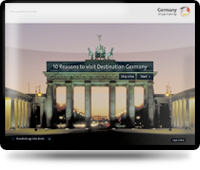
Seventeen ferries to travel on, and thirteen bridges to cross: this is one of Germany's newest scenic routes, launched in June 2004. It is a 250 kilometre waterside museum between Bremervörde and Kiel. The German Ferries Route boasts a remarkably large collection of ancient and modern methods of crossing a stretch of water. The route showcases every conceivable method of getting across a waterway: elevated railway bridges, bascule bridges, tunnels, pontoon or pram ferries and even two of the world's only eight transporter bridges. Taking the ferry is an experience to be savoured as you cross between the Oste river and the Baltic coast, slipping between moorland, sandy heathland and marshes with gulls circling overhead, flanked by dikes and alongside cruise ships. The idyllic Oste, the amazing Elbe estuary and the 98 kilometre Kiel Canal, the busiest shipping canal in the world, busier than the Suez and Panama Canals, lead the way.

You can travel by bike, car or boat along the German Ferries Route which links more than 50 ferries, bridges, tunnels, locks and flood barriers, as well as natural and man-made landscapes and all things maritime. The broad, flat countryside along the banks of the Kiel Canal provides excellent terrain for cycling tours. Riding alongside the world's busiest artificial waterway, cyclists can keep pace with huge white ocean liners. 14 ferries, 10 bridges and two tunnels - one with the longest escalator in Germany - cross this man-made waterway and they can all be used free of charge in accordance with long-standing agreements. The central section of the route around the Elbe estuary follows the Elbe Cycle Way along the dike between Brunsbüttel and Glückstadt. Then it crosses the river by ferry and continues through Nordkehdingen to the picturesque Oste estuary. "From the Devil's Moor to the mudlflats" is the name of the Wischhafen-Neuhaus-Geversdorf section. There are any number of detours on either side of the Ferry Route allowing cyclists to ring the changes.








